
Review on Seachem AmGuard 250ml - Superior Water Conditioner for Optimal Aquarium Health by George Thorson

Removes ammonia but also oxygen.
I use this product when I need to detox ammonia quickly, for example when starting a nitrogen cycle or after one of them has failed. This is an absolutely fantastic conversion of free toxic ammonia into ionically bound ammonia. Now I have to clarify what that means. First, I understand that the ammonia level of most tanks, when measured with an ammonia test kit, measures the total amount of ammonia. These tests are not accurate when using this product. First, AmGuard does not remove toxic ammonia. It converts toxic ammonia NH3 into ammonium NH4. This NH4 ammonia is much less harmful to fish than NH3 ammonia. Their total ammonia test kits (like the basic API test kits) will show the total NH3 and NH4 ammonia in the aquarium, although it has become much less toxic to the fish. This transition from ammonia to ammonium lasts only a few days and then turns back into toxic ammonia NH3. Therefore, regular dosing over several days is required in most cases before your nitrogen cycle begins to deplete it. Once AmGuard blocks this ammonia, it can be consumed by beneficial bacteria in the same way as toxic ammonia. However, remember that most test kits will still tell you the total ammonia level. As such, the tests will be wildly inaccurate as to your tank's current toxicity. So you need to make sure you already have a healthy colony of bacteria, or if your nitrogen cycle is just beginning or restarting you need to add bacterial cultures like Seachem Stability to use up both ammonia and ammonium. Remember that any ammonia that the bacteria doesn't eat will turn back into toxic ammonia in a few days. Because of this, you may need to be treated this way for a week or two until your nitrogen cycle begins to use up all of the ammonia and ammonium. Now it can be many treatments over the course of a week or more. So I have to point out some of the downsides of overusing or overdosing. The first disadvantage is that AmGuard only blocks free toxic ammonia (converts NH3 to NH4). Nitrite or nitrate can also show up in large amounts as your beneficial bacteria eat the ammonia/ammonium and convert it to nitrite. As such, you may also need to dose Prime to take care of nitrites as well. Prime works with ammonia, nitrites and nitrates as well as chlorine and chloramine. AmGuard only works with ammonia. But AmGuard blocks ammonia faster than Prime. But only Prime does it all. Although I can't find any mention of oxygen starvation in Seachem's texts, I can tell you that Prime and AmGuard, used in high doses, quickly deplete the oxygen in the water. If you have fish in an aquarium, they will come to the surface for air within an hour or two of heavy dosing of this product. And that's regardless of how flat your movement is. Therefore, avoid overdosing and only treat with the recommended doses. I've found that if you have airstones or anything else that's forcing air into the water in the tank, it usually goes back to normal in about 1-6 hours. But your fish can chug and chug along the surface for as long as you overdose. Once you see your nitrogen cycle working and consuming ammonia and nitrites on its own, you can stop dosing AmGuard. Now you might have a problem. This is your ammonia test. Most test kits test for total ammonia (both NH3 and NH4). The main API test suite is one of them, but most of them test for general ammonia/ammonium. You will need a special Toxic Free Ammonia (NH3) test kit to determine how well this product is working. I use a Seachem Ammonia Alert Badge that hangs in your tank and shows you a specific color so you know how much free toxic ammonia you have. With products like Prime or AmGuard, most of the total ammonia is no longer toxic. But it's still in the water, and these full test kits will give you very high readings when most of that ammonia is no longer toxic. You need a free ammonia toxicity test to see how much ammonia (NH3 only) is really toxic at this point. But you also want to use a total ammonia tester to check how much ammonia is left in the water. All of the ammonia will either be consumed by your nitrogenous bacterial cycle or become toxic again if you stop your AmGuard treatment before your cycle has started. I know this is a bit technical, but at least get it. Using AmGuard and then using this set of APIs, the ammonia readings may not drop at all or even increase over time when using AmGuard. Even if the toxic ammonia has been blocked by AmGuard and is no longer a problem. Total ammonia tests like API are no longer accurate when dosing Prime or Amguard. These types of tests make you think you still have a lot of toxic ammonia when you actually have less toxic ammonia. Therefore, you can be fooled by using total ammonia test kits like API kits. The Seachem Ammonia Warning Symbol lasts up to a year in the aquarium, giving you a better idea of the toxicity of ammonia (NH3) in your aquarium. Total ammonia tests, like the API, give a good indication of when your nitrogen cycle is running. Ideally, you want enough beneficial bacteria that feed on ammonia and nitrite to keep the reading near zero. But during cycle start, AmGuard dosing saves your fish, but your total ammonia levels may remain high until the bacterial nitrogen cycle is complete. Nitrogen cycles started or restarted crashed cycles. But be careful and avoid overdosing if you have fish in the tank. Over time, your nitrogen cycle uses up the ammonia and nitrite in your tank, converting it to nitrate. Nitrates are much less harmful and can be absorbed by plants with regular water changes. Until your nitrogen cycle is up and running, Prime, AmGuard and Stability work well together to block toxins in your tank until the nitrogen cycle can absorb them. Just don't expect positive results with total ammonia test kit readings until the cycle is complete.
- Price
- -
New products
Comments (0)
Top products in 🌊 Aquarium Water Treatments
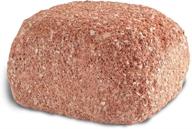
EcoBio-Block Stone: Natural Water Clarifier & Odor Remover for Aquariums (Medium) - Treats 15-40 Gallons Efficiently

10 Review
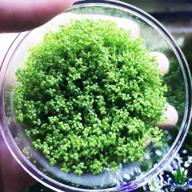
Live Freshwater Aquarium Plants: Dwarf Baby Tears, Hemianthus Callitrichoides, Java Moss In Vitro TC Cup By Greenpro

31 Review

Tetra AquaSafe tap water treatment agent, 5 l

11 Review
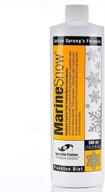
🐟 Two Little Fishies Marine Snow ATLMSPD4, 16.9 oz

10 Review
Another interesting products
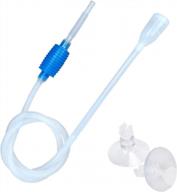
🐠 U-BCOO Aquarium Gravel Cleaner Fish Tank: Manual Siphon for Efficient Filter Gravel Cleaning and Water Change in Tanks

22 Review
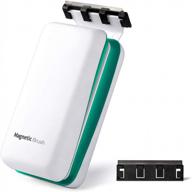
Efficient 2-In-1 Magnetic Fish Tank Cleaner With Non-Slip Design And Scratch-Free Blades

37 Review
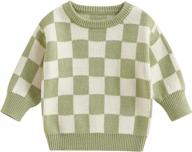
Jasonwell Magnetic Aquarium Fish Tank Glass Algae Cleaner - Floating Brush (L Size)

37 Review
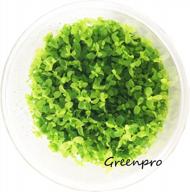
Greenpro Micranthemum Monte Carlo: Live Large Pearl Grass Aquatic Plant In Tissue Culture Cup For Freshwater Fish Tanks And Aquariums

49 Review

